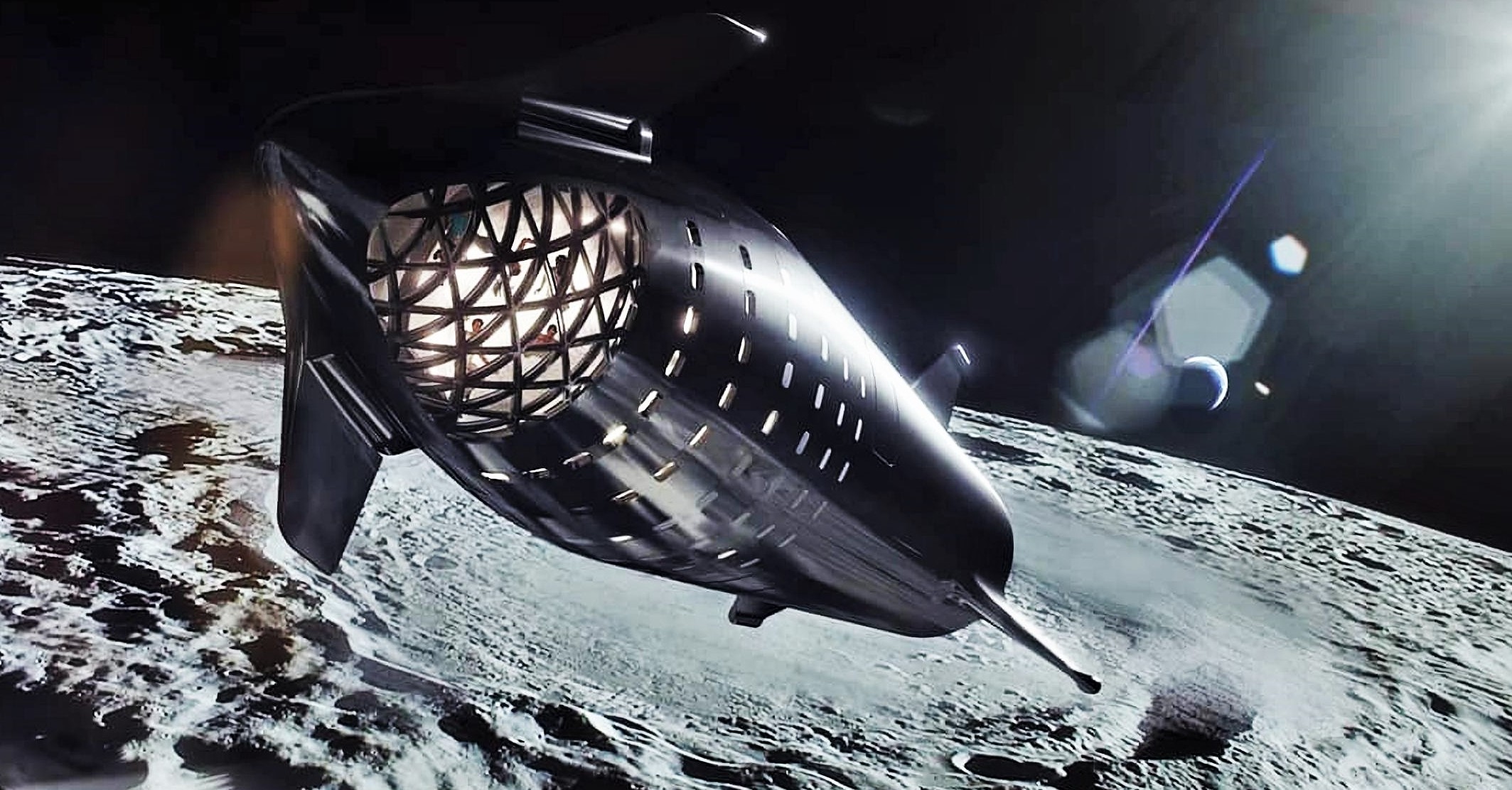

News
SpaceX to mature Starship Moon landing and orbital refueling tech with NASA’s help
NASA has announced 19 technology partnerships between the agency’s many spaceflight centers and 13 companies, including SpaceX, Blue Origin, and more. This round of Space Act Agreements (SAAs) shows a heavy focus on technologies and concepts that could benefit exploration of the Moon and deep space more generally, including lunar landers, food production, reusable rockets, and more.
Put simply, all 19 awards are great and will hopefully result in tangible products and benefits, but SpaceX has a track record of achievement on the cutting edge of aerospace that simply has not been touched over the last decade. As such, the company’s two SAAs are some of the most interesting and telling, both ultimately focused on enabling Starship launches to and landings on the Moon and any number of other destinations in the solar system. Perhaps most importantly, it signals a small but growing sect within NASA that is willing and eager to acknowledge Starship’s existence and actively work with SpaceX to both bring it to life and further spaceflight technology in general.
One agreement focuses specifically on “vertically land[ing] large rockets on the Moon”, while the other more generally seeks to “advance technology needed to transfer propellant in orbit”, a feature that Starship’s utility would be crippled without. In this particular round of SAAs, they will be “non-reimbursable” – bureaucratic-speak for a collaboration where both sides pay their own way and no money is exchanged. SpaceX’s wins ultimately show that, although NASA proper all but refuses to acknowledge Starship, the many internal centers it is nothing without are increasingly happy to extend olive branches towards the company and its ambitious next-generation rocket.
“SpaceX of Hawthorne, California, will work with NASA’s Kennedy Space Center in Florida to advance their technology to vertically land large rockets on the Moon. This includes advancing models to assess engine plume interaction with lunar regolith.”
“SpaceX will work with Glenn and Marshall to advance technology needed to transfer propellant in orbit, an important step in the development of the company’s Starship space vehicle.”
NASA, July 30th, 2019
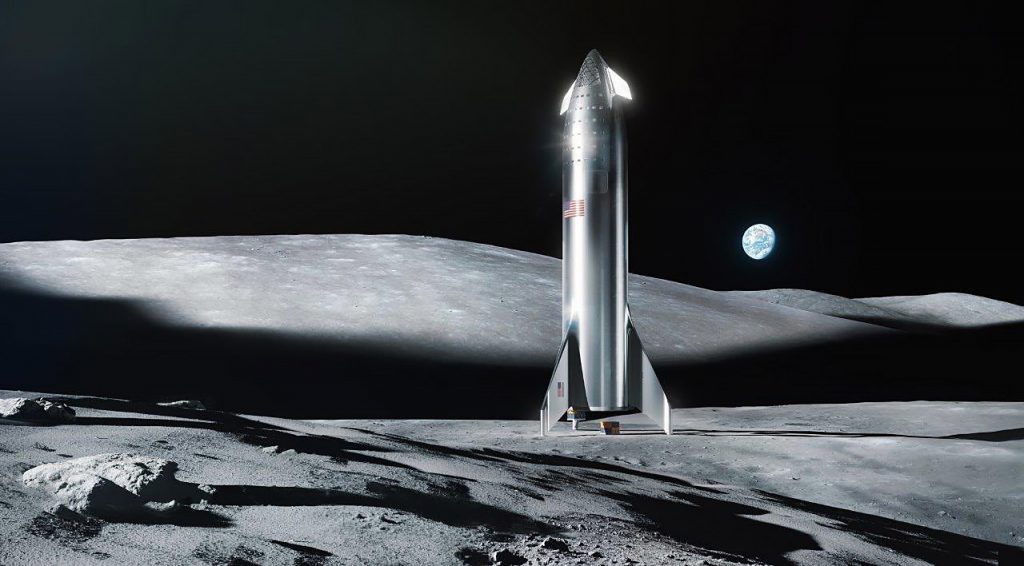
Giant rockets on the Moon
SpaceX’s first SAA centers around studying the task of landing Starship – a “large rocket” – on the Moon and attempting to understand just how the Moon’s powdery regolith (i.e. inorganic topsoil) will respond when subjected to the plume of a Raptor engine. Put simply, the task of landing a spacecraft as massive as Starship has never been attempted on the Moon, and the process itself – irrespective of any potential surprises from plume-regolith interaction – poses some obvious challenges.
In the most basic sense, Starship is massive. According to the vehicle’s circa. 2018 dimensions, it will stretch 55m (180 ft) from nose to tail, be 9m (30 ft) in diameter, and weigh (per 2017 specs) ~85 tons (190,000 lb) empty and upwards of ~1350 tons (2.95 million lbs) fully fueled. For reference, that is almost 80% as tall and more than 2.5 times as heavy as an entire Falcon 9 rocket. In the history of lunar exploration, Apollo’s Lunar Module (LM) – including landing and ascent stages – is the heaviest vehicle to have ever landed on the Moon, weighing a maximum of 5500 kg (12,100 lb) at landing (Apollo 17).
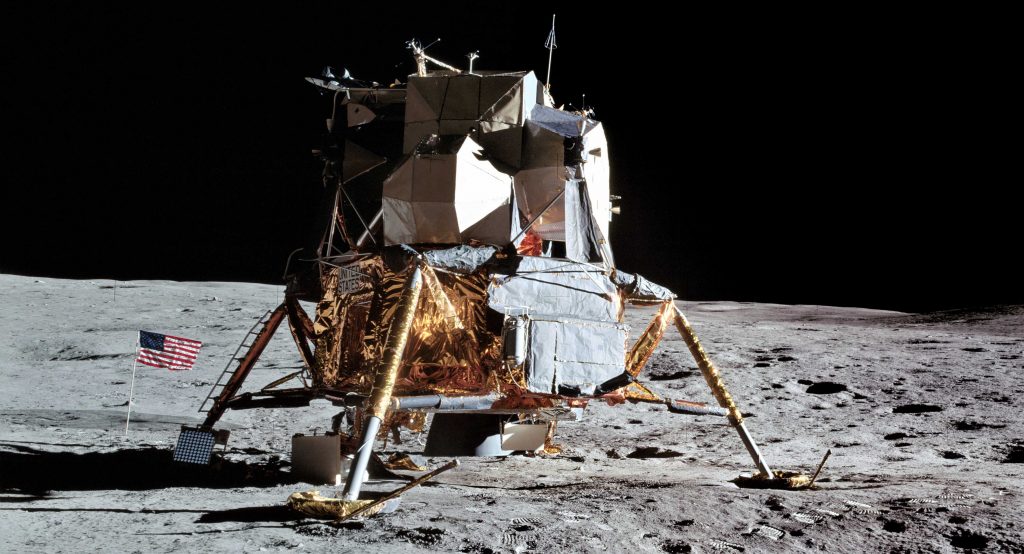
As such, an expendable Starship landing on the Moon with zero propellant for a possible return to Earth would easily break the record for landed mass by a factor of 10-20, while a Starship landing with enough delta V to simply return to lunar orbit – let alone land back on Earth – could easily up that to 30-50x.
Aside from the mass of Starship, there is also the question of how to gently land the spacecraft in the first place. Lunar gravity is roughly 1/6th of Earth’s, meaning that, say, 200 tons (i.e. Raptor’s thrust) would equate to more than 1200 tons of effective thrust on the Moon, a more than 10:1 thrust-to-weight ratio. For reference, the Apollo Lunar Module descent stage was powered by an engine with ~10,000 lbf (4.5 tons) of thrust that could throttle as low as ~1000 lbf (0.45 tons), meaning that even in lunar gravity conditions, the LM could have a thrust-to-weight ratio less than 1. For the purpose of safely landing on the Moon and ensuring a gentle landing, that is an extremely desirable thing to have.
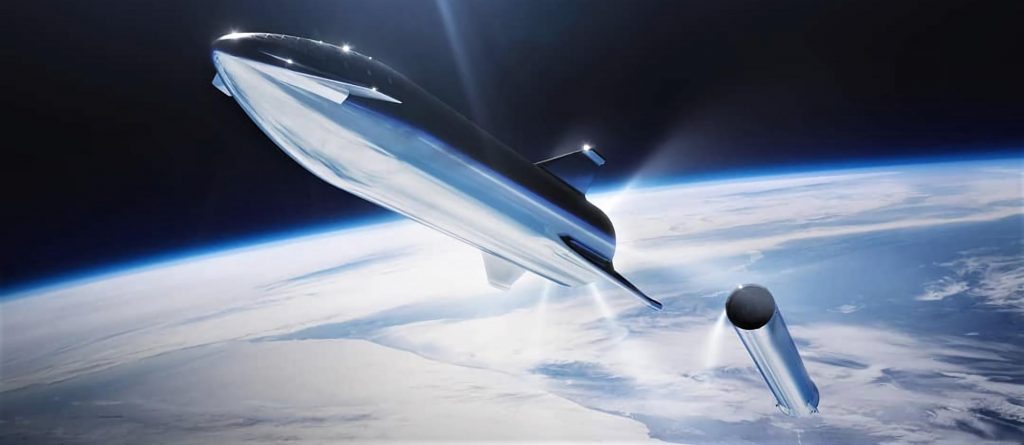
Much like Falcon 9’s upper stage features cold-gas nitrogen thrusters to settle its propellant before MVac ignition, Starship will likely need a similar system, and it’s possible that that system could be used to gently land Starship and tweak its velocity in the final stages of a Moon landing. This study will likely be used in part to figure out what exactly the optimal method of landing Starship is.
How to Refuel Your Starship
Finally, SpaceX’s second NASA SAA focuses on developing the immature technology of in-orbit propellant transfer, an absolute necessity for Starship to simultaneously be fully reusable and capable of landing significant payloads on other planets (or moons). Ever since SpaceX CEO Elon Musk first revealed the company’s Mars-bound launch vehicle in 2016, it has incorporated in-orbit refueling as a foundational feature.

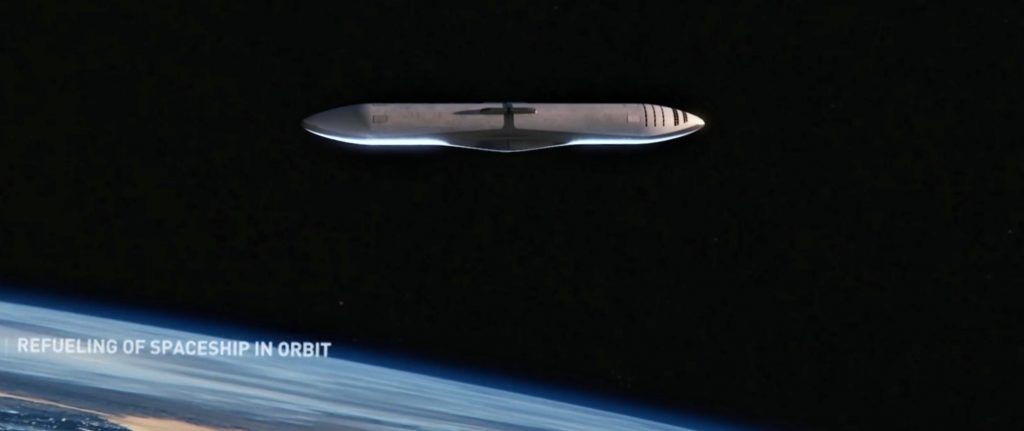
Due to the additions required for full reusability, Starship will essentially need to be launched into Earth orbit and then quickly refueled anywhere from 1 to 10+ times depending on the ultimate destination and the mass of the cargo being delivered. This is not to say that Starship will be useless without refueling – according to SpaceX VP of Sales Jonathan Hofeller, Starship will be capable of launching more than 100 tons (220,000 lb) to low Earth orbit and 20 tons (44,000 lb) to geostationary transfer orbit (GTO), more than enough to satisfy every commercial demand currently in existence.
However, with one or several refueling missions, Starship should be able to turn 100 tons to LEO into 100 tons to the surface of Mars or dozens of tons to the surface of the Moon. Put simply, with reliable and fast refueling, Starship goes from being a major step forward in reusable spaceflight to the key to the solar system and to radically affordable deep spaceflight.
Check out Teslarati’s Marketplace! We offer Tesla accessories, including for the Tesla Cybertruck and Tesla Model 3.

Elon Musk
Elon Musk and Tesla AI Director share insights after empty driver seat Robotaxi rides
The executives’ unoccupied tests hint at the rapid progress of Tesla’s unsupervised Robotaxi efforts.

Tesla CEO Elon Musk and AI Director Ashok Elluswamy celebrated Christmas Eve by sharing personal experiences with Robotaxi vehicles that had no safety monitor or occupant in the driver’s seat. Musk described the system’s “perfect driving” around Austin, while Elluswamy posted video from the back seat, calling it “an amazing experience.”
The executives’ unoccupied tests hint at the rapid progress of Tesla’s unsupervised Robotaxi efforts.
Elon and Ashok’s firsthand Robotaxi insights
Prior to Musk and the Tesla AI Director’s posts, sightings of unmanned Teslas navigating public roads were widely shared on social media. One such vehicle was spotted in Austin, Texas, which Elon Musk acknowleged by stating that “Testing is underway with no occupants in the car.”
Based on his Christmas Eve post, Musk seemed to have tested an unmanned Tesla himself. “A Tesla with no safety monitor in the car and me sitting in the passenger seat took me all around Austin on Sunday with perfect driving,” Musk wrote in his post.
Elluswamy responded with a 2-minute video showing himself in the rear of an unmanned Tesla. The video featured the vehicle’s empty front seats, as well as its smooth handling through real-world traffic. He captioned his video with the words, “It’s an amazing experience!”
Towards Unsupervised operations
During an xAI Hackathon earlier this month, Elon Musk mentioned that Tesla owed be removing Safety Monitors from its Robotaxis in Austin in just three weeks. “Unsupervised is pretty much solved at this point. So there will be Tesla Robotaxis operating in Austin with no one in them. Not even anyone in the passenger seat in about three weeks,” he said. Musk echoed similar estimates at the 2025 Annual Shareholder Meeting and the Q3 2025 earnings call.
Considering the insights that were posted Musk and Elluswamy, it does appear that Tesla is working hard towards operating its Robotaxis with no safety monitors. This is quite impressive considering that the service was launched just earlier this year.
Elon Musk
Starlink passes 9 million active customers just weeks after hitting 8 million
The milestone highlights the accelerating growth of Starlink, which has now been adding over 20,000 new users per day.

SpaceX’s Starlink satellite internet service has continued its rapid global expansion, surpassing 9 million active customers just weeks after crossing the 8 million mark.
The milestone highlights the accelerating growth of Starlink, which has now been adding over 20,000 new users per day.
9 million customers
In a post on X, SpaceX stated that Starlink now serves over 9 million active users across 155 countries, territories, and markets. The company reached 8 million customers in early November, meaning it added roughly 1 million subscribers in under seven weeks, or about 21,275 new users on average per day.
“Starlink is connecting more than 9M active customers with high-speed internet across 155 countries, territories, and many other markets,” Starlink wrote in a post on its official X account. SpaceX President Gwynne Shotwell also celebrated the milestone on X. “A huge thank you to all of our customers and congrats to the Starlink team for such an incredible product,” she wrote.
That growth rate reflects both rising demand for broadband in underserved regions and Starlink’s expanding satellite constellation, which now includes more than 9,000 low-Earth-orbit satellites designed to deliver high-speed, low-latency internet worldwide.
Starlink’s momentum
Starlink’s momentum has been building up. SpaceX reported 4.6 million Starlink customers in December 2024, followed by 7 million by August 2025, and 8 million customers in November. Independent data also suggests Starlink usage is rising sharply, with Cloudflare reporting that global web traffic from Starlink users more than doubled in 2025, as noted in an Insider report.
Starlink’s momentum is increasingly tied to SpaceX’s broader financial outlook. Elon Musk has said the satellite network is “by far” the company’s largest revenue driver, and reports suggest SpaceX may be positioning itself for an initial public offering as soon as next year, with valuations estimated as high as $1.5 trillion. Musk has also suggested in the past that Starlink could have its own IPO in the future.
News
NVIDIA Director of Robotics: Tesla FSD v14 is the first AI to pass the “Physical Turing Test”
After testing FSD v14, Fan stated that his experience with FSD felt magical at first, but it soon started to feel like a routine.

NVIDIA Director of Robotics Jim Fan has praised Tesla’s Full Self-Driving (Supervised) v14 as the first AI to pass what he described as a “Physical Turing Test.”
After testing FSD v14, Fan stated that his experience with FSD felt magical at first, but it soon started to feel like a routine. And just like smartphones today, removing it now would “actively hurt.”
Jim Fan’s hands-on FSD v14 impressions
Fan, a leading researcher in embodied AI who is currently solving Physical AI at NVIDIA and spearheading the company’s Project GR00T initiative, noted that he actually was late to the Tesla game. He was, however, one of the first to try out FSD v14.
“I was very late to own a Tesla but among the earliest to try out FSD v14. It’s perhaps the first time I experience an AI that passes the Physical Turing Test: after a long day at work, you press a button, lay back, and couldn’t tell if a neural net or a human drove you home,” Fan wrote in a post on X.
Fan added: “Despite knowing exactly how robot learning works, I still find it magical watching the steering wheel turn by itself. First it feels surreal, next it becomes routine. Then, like the smartphone, taking it away actively hurts. This is how humanity gets rewired and glued to god-like technologies.”
The Physical Turing Test
The original Turing Test was conceived by Alan Turing in 1950, and it was aimed at determining if a machine could exhibit behavior that is equivalent to or indistinguishable from a human. By focusing on text-based conversations, the original Turing Test set a high bar for natural language processing and machine learning.
This test has been passed by today’s large language models. However, the capability to converse in a humanlike manner is a completely different challenge from performing real-world problem-solving or physical interactions. Thus, Fan introduced the Physical Turing Test, which challenges AI systems to demonstrate intelligence through physical actions.
Based on Fan’s comments, Tesla has demonstrated these intelligent physical actions with FSD v14. Elon Musk agreed with the NVIDIA executive, stating in a post on X that with FSD v14, “you can sense the sentience maturing.” Musk also praised Tesla AI, calling it the best “real-world AI” today.








